Caitlin Moore
“Pinax Microcosmographicus” came to us from Cornell’s Rare and Manuscript collection, in preparation for being displayed in an upcoming exhibit. The deceptively plain vellum binding with tattered ribbons hides a remarkable 17th c. “pop-up book”!
These anatomical drawings are constructed in such a way that you can lift various flaps to see different layers of the human body and other hidden images.
The first issue I chose to address was the binding structure. The book consists of four sections sewn on vellum tapes which are laced into the covers. The first page of each folio has a stub that wraps around the back of the inner folio to be sewn through. These stubs had broken and been pushed under the previous section.
I humidified each stub and coaxed it back to it’s original position. I then reinforced weakened areas with Japanese tissue and wheat starch paste to prevent the tabs from coming back through without affecting the flexibility of the structure.
Many of the flaps had become weakened and were curling or creased from time and use. The curling flaps were at risk of being crushed when the pages were turned or the book closed. This required localized humidification which was carried out using very slightly dampened pieces of blotter to relax the paper followed by dry blotter and weight to make sure the paper dried in the correct position. Blotter was also inserted behind the page to draw the moisture through the paper and a sheet of mylar protected the page beneath from any moisture that might carry through.
Once the flaps were flattened, I repaired all edge tears and some of the smaller pieces such as this foot which had to be reinforced as the small toe was beginning to detach and had to be consolidated.
Then came the ribbons… The ribbons were a mess, they were frayed and twisted and looked beyond repair.
I decided to alternate lightly humidification of the ribbons and gentle reshaping with my fingers. This took a considerable amount of time but eventually they became flatter and I was able to start sorting out the fraying fibers. I used a small awl to gently separate the fibers and put them back into position.
I contacted a local textile conservator and asked for advice on consolidating the ribbon. I had planned to back the frayed bits with a tinted tissue. The textile conservator agreed and suggested using Methyl Cellulose instead of paste to attach the tissue. I then used acrylics to tint a lightweight hanji paper to match the color of the ribbon.
I attached the tinted tissue to the ribbons with Methyl Cellulose as suggested and let it dry under weight. This was repeated on all four ribbons with great results!!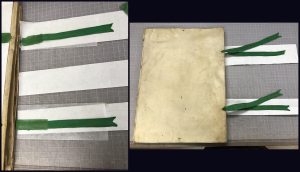
Finally I built a drop spine box to protect the book. I added velcro closures to ensure the box would keep the vellum covers in place should they start to warp. You can see the Pinax Microcosmographicus in the artist book exhibit in Kroch Library opening June 8!!!

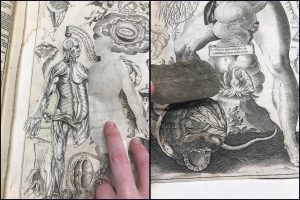
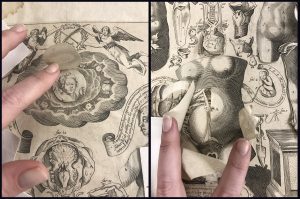
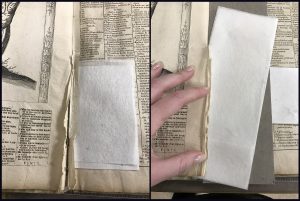
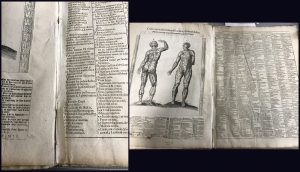
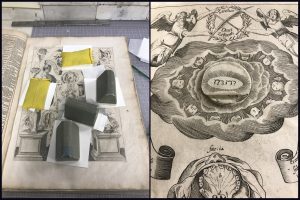
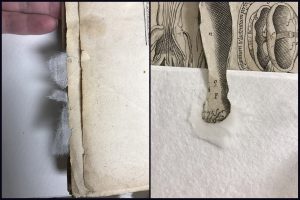
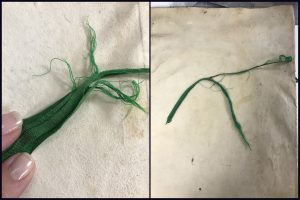
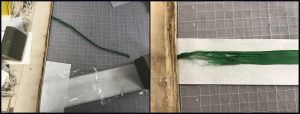
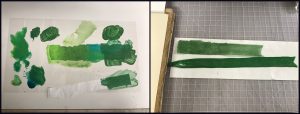
What an amazing job you did, Caitlin! We can’t wait to see your work on display in the Hirshland Gallery!
What was the rationale for using methylcellulose rather than paste for consolidating the ribbons?
I was trying to minimize the amount of moisture I introduced to prevent tide lines on the material.